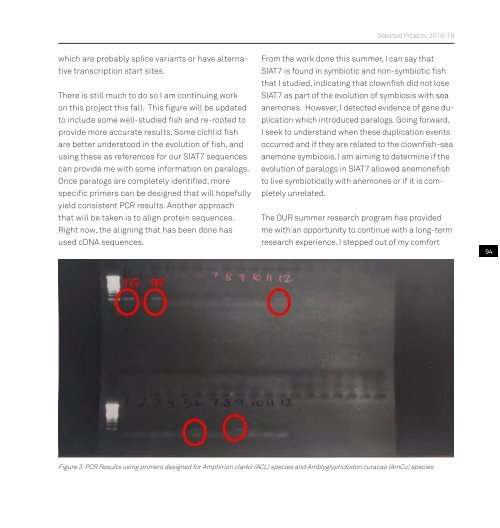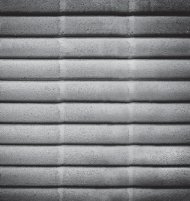Undergrad_Book_16-18_Pge_View_Print_no print marks_compressed
Create successful ePaper yourself
Turn your PDF publications into a flip-book with our unique Google optimized e-Paper software.
Selected Projects 20<strong>16</strong>-<strong>18</strong><br />
which are probably splice variants or have alternative<br />
transcription start sites.<br />
There is still much to do so I am continuing work<br />
on this project this fall. This figure will be updated<br />
to include some well-studied fish and re-rooted to<br />
provide more accurate results. Some cichlid fish<br />
are better understood in the evolution of fish, and<br />
using these as references for our SIAT7 sequences<br />
can provide me with some information on paralogs.<br />
Once paralogs are completely identified, more<br />
specific primers can be designed that will hopefully<br />
yield consistent PCR results. A<strong>no</strong>ther approach<br />
that will be taken is to align protein sequences.<br />
Right <strong>no</strong>w, the aligning that has been done has<br />
used cDNA sequences.<br />
From the work done this summer, I can say that<br />
SIAT7 is found in symbiotic and <strong>no</strong>n-symbiotic fish<br />
that I studied, indicating that clownfish did <strong>no</strong>t lose<br />
SIAT7 as part of the evolution of symbiosis with sea<br />
anemones. However, I detected evidence of gene duplication<br />
which introduced paralogs. Going forward,<br />
I seek to understand when these duplication events<br />
occurred and if they are related to the clownfish-sea<br />
anemone symbiosis. I am aiming to determine if the<br />
evolution of paralogs in SIAT7 allowed anemonefish<br />
to live symbiotically with anemones or if it is completely<br />
unrelated.<br />
The OUR summer research program has provided<br />
me with an opportunity to continue with a long-term<br />
research experience. I stepped out of my comfort<br />
94<br />
Figure 3. PCR Results using primers designed for Amphirion clarkii (ACL) species and Amblyglyphidodon curacao (AmCu) species



